Are you looking for a way to find and remove stolen content in WordPress?
You’ve worked hard on your website, but now your content has been stolen, published, and is taking traffic away from your brand.
In this article, we’ll show you how you can find and remove stolen content in WordPress, no matter if it’s a single post or your entire site has been copied.

How and Why is Website Content Stolen?
One widespread method for stealing content is blog content scraping. This is where content is taken from your site, usually via your RSS feed, and republished on another site.
Sometimes your content will be simply copied and pasted directly to another website, including your formatting, images, videos, and more.
Other times, your content will be reposted with attribution and a link back to your website, but without your permission. Although this can help your SEO, you may want to keep your original content hosted on your site only.
Usually, the main motivation for content theft is to profit off of your hard work.
Having your content stolen is a stressful experience that a lot of WordPress site owners unfortunately experience.
Just know that you’re not alone, and it’s a problem that can be fixed.
Here are the 5 most common ways to find and remove stolen content in WordPress.
1. Set Up Automatic Content Theft Notifications
Sometimes your loyal visitors will alert you that your content has been stolen, or they saw it somewhere else on the web.
Luckily, you don’t have to wait for a helpful reader to notify you.
Google Alerts is often used for brand name notifications. You enter the name of your website and get email notifications whenever you’re mentioned online.
But, this same feature can be used to alert you of content that’s being used without your permission.
Simply navigate to Google Alerts. Next, enter the name of your website, your URL, or use a portion of your article.
For example, if you end every blog post with the same CTA, then you can get notifications whenever this appears online.
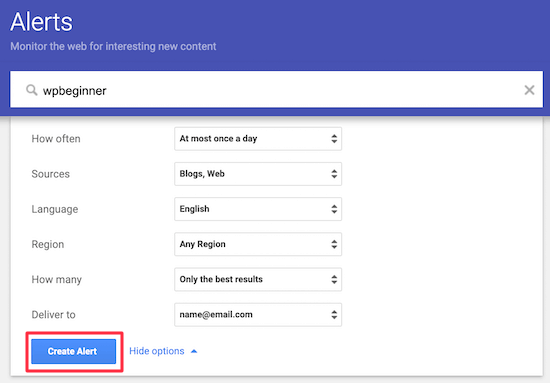
After that, you’ll choose the ‘Sources’. Select ‘Blogs’ and ‘Web’ from the drop-down list. Then, click ‘Create Alert’.
Now, you’ll receive an email whenever your content appears on the web or your website is mentioned.
2. Manually Search for Stolen Content
Copyscape is a plagiarism checker tool that can also be used to find stolen content published elsewhere across the web.
All you have to do is navigate to Copyscape and enter your website URL. You can also enter a page or post URL to see if one of your blog posts or site pages have been copied and stolen.
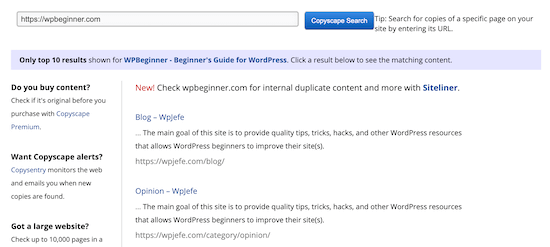
The free version of the tool gives you the top 10 results, which should be enough for smaller WordPress blogs.
If you have a bigger website, or you want results of every single mention of your copied text, then you’ll need to upgrade to the premium version.
The paid version of the tool lets you check up to 10,000 pages with a single click. If you publish a lot of content on your WordPress website, then this could be very useful.
Another manual tool you can use is Grammarly. Grammarly is a popular online grammar checking tool.
The premium version of Grammarly has a built-in plagiarism checker. You can copy and paste your content into the tool, and it’ll run a scan to see if any matches turn up online.
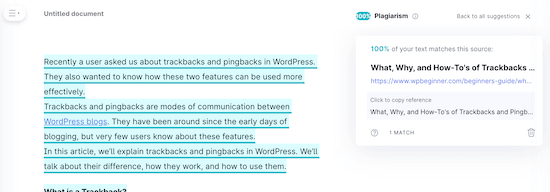
3. Contact the Offending Host or Registrar
So, you’ve found stolen content, now what?
The simplest way to take down stolen content is to file a DMCA complaint against the website.
Usually, if it’s a spam website, or a site that’s scraping your content from your RSS feed, then it can be difficult to find contact information.
However, you can use the IsItWP lookup tool to find out where the domain and website are hosted.

Simply enter the domain that’s published your stolen content and click ‘Analyze Website’.
The tool will pull up any available information, including the web hosting company and registrar.
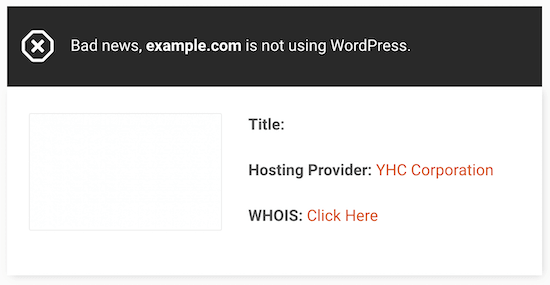
You’ll notice that the host and registrar are shown, even if the website isn’t using WordPress. You can contact the host and registrar directly to try and get the site taken down.
Since stealing content is an illegal activity, web hosting companies don’t want to host websites that are breaking the law.
Most reputable web hosting companies take DMCA requests seriously and will work with you to resolve the situation including removing the pages in violation.
4. Submit a Takedown Notice to Google
Another way to remove stolen content is to contact Google directly.
You need to be careful using this method because it requires a lot of proof, and if you do false reports, then it can get your account in trouble.
There are a few different ways to file a DMCA complaint with Google, but we recommend using the one inside Google Search Console.
First, you’ll need to have your site linked with Google Search Console. If you haven’t done this yet, then see our guide on how to add your WordPress site to Google Search Console.
Then, you can use the Google Search Console Copyright Removal Tool.
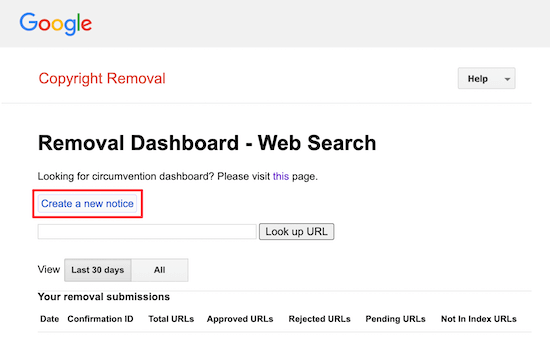
Simply click ‘Create a new notice’.
This will bring up a screen where you can enter all of the relevant information including your contact information, what posts were stolen, and the location of the stolen material.
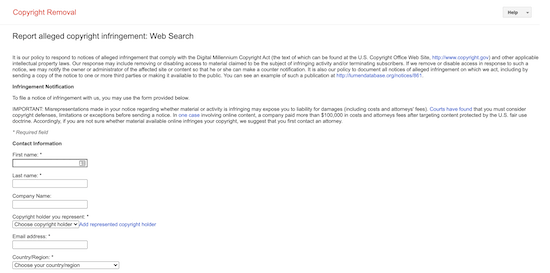
The more detailed information you’re able to provide, the better the chances of the offending site getting taken down.
If you need to gather more information for your complaint, then you can use a tool like Wayback Machine.
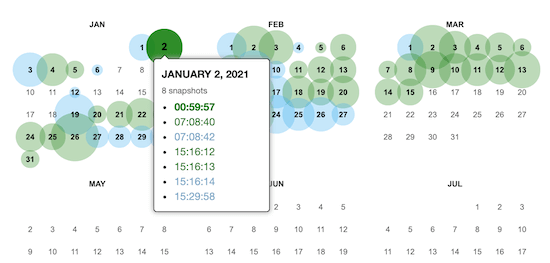
This tool takes takes snapshots of your website at different points in time.
So, you can compare the date you published the article to the offending site who later stole your content.
5. Use an All in One Scanner and Takedown Tool
You can also use the Digital Millennium Copyright Act (DMCA) tool to help you find duplicate content across the web.
Just enter your URL into the tool and it’ll scour the web for sites that have stolen your content.
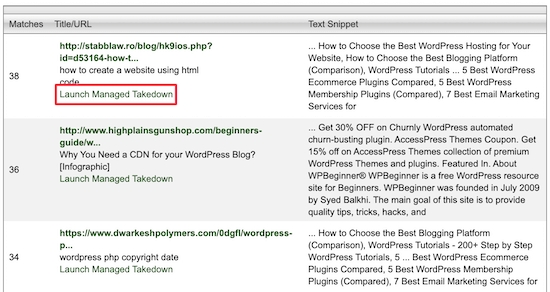
Once you’ve found a site that plagiarized or stolen your content you can click ‘Launch Managed Takedown’ to start the takedown process.
Note that the results won’t always be stolen content. Sometimes it’ll be infographics, backlinks, unlinked brand mentions, and more.
The discovery and takedown process is similar to the tools above, but instead of having to use multiple tools, you can take care of everything in one place.
DMCA offers premium takedown tools and templates for $10 per month. Or, you can purchase a full service takedown for $199, where their team of experts will get your stolen content removed for you.
Final Thoughts on Dealing with Content Theft
Content theft is a real problem that every website owner deals with. Unfortunately the larger your website gets, the more people will copy you.
Some will do blatant content theft by using automated content scraping tools while others will take inspiration from your content and paraphrase.
As a website owner, it’s extremely frustrating to have your content stolen. We deal with this regularly on WPBeginner. The automated bot sites are easy enough to take down with DMCA complaints.
However since we’re the largest WordPress resource site, many other WordPress bloggers, theme companies, and even some hosting companies routinely copy our headline word-for-word. They may paraphrase the content to make it unique, but we know that inspiration was driven from our articles.
We take this imitation as a form of flattery, and it further validates that we’re continuing to lead in the right way.
If you have a competitor that’s always copying ideas from you, but it’s not blatant copy, then there’s not a lot you can do about it. Don’t let that bring you down, but rather continue to focus on your mission to serve your audience.
We hoped this article helped you learn how to find and remove stolen content in WordPress. You may also want to see our guide on how to prevent image theft in WordPress and learn how to trademark and copyright your blog’s name and logo.
If you liked this article, then please subscribe to our YouTube Channel for WordPress video tutorials. You can also find us on Twitter and Facebook.
The post How to Easily Find and Remove Stolen Content in WordPress (5 Ways) appeared first on WPBeginner.

